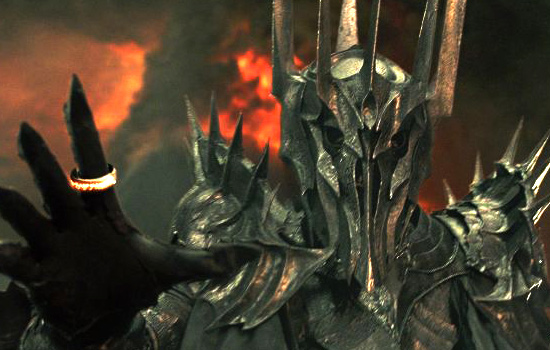
In Lord of the Rings, the Dark Lord Sauron has lost something. And he’s desperate to get it back.
Sauron – the title character of the fantasy epic – has forged his malignant power and even part of his soul into a single piece of jewelry. The Ring of Power now represents the ultimate weapon. But Sauron has carelessly let it slip away.
He knows his enemies have found the ring. And he’s terrified they will use it against him.
But that’s not what his enemies intend to do. They know that if they use the ultimate weapon to attack him, they themselves will be corrupted. You cannot use Sauron’s weapon against Sauron without becoming a new Sauron.
That strange, counterintuitive way of seeing the world flowed from the spiritual convictions of J.R.R. Tolkien, a shy Oxford academic and faithful Catholic who knew from firsthand experience what it meant to stand against powerful forces.
During World War I he had seen friends and comrades fall in the horrific frontal assaults of the Battle of the Somme. During World War II he served on the home front as a codebreaker, part of the team intent on toppling Adolph Hitler.
At the beginning of the 20th century, many of Europe’s intellectuals were ready to wash their hands of the outmoded concepts of good and evil. But by 1945, when the Third Reich was finally imploding, the notion that evil might actually exist was making a comeback.
Lord of the Rings was published in 1948. Tolkien always deflected the idea that Sauron was modeled on Hitler.
But he had spent years reflecting on one of the war’s most disturbing questions: How do you defeat a monster without becoming a monster yourself?
The heroes of Tolkien’s epic – the most widely-read work of fiction in the 20th century – decide that their only safe option is to destroy the Ring of Power. Tolkien was convinced that true strength is manifested not in using destructive power, but in the willingness to give it up.
That’s fantasy for you. But what about reality? Wouldn’t it be amazing if something like that happened in the real world?
Something like that has indeed happened during our own lifetimes.
In 1990, Nelson Mandela was set free after spending 27 years behind bars in South Africa. He had been sentenced to life in prison for trying to overthrow his homeland’s racist system of apartheid. In their efforts to humiliate him, Mandela’s jailers had dressed him in shorts and a child’s jacket. His vision had been permanently compromised because of the bright sunlight shimmering off the blocks of lime he had been forced to cut in a quarry.
Throughout his imprisonment, Mandela had quietly represented those who were powerless. Weak. Rejected. Crushed by the Powers That Be.
When South Africa’s cultural tectonic plates finally began to shift, he was pardoned and released. The whole world applauded – and then held its breath. Most of his adult life had been stolen from him. He had borne his people’s pain for almost three decades. Four years later, Mandela was elected president of South Africa. Now he had the real-world equivalent of the Ring of Power. At last he could do whatever he wanted.
Mandela chose to stay on the path that had sustained him for 27 years. He led with forgiveness instead of anger – an outstretched hand instead of a clenched fist. And South Africa began to heal.
“For even the Son of Man did not come to be served, but to serve, and to give his life as a ransom for many.” (Mark 10:45)
Jesus used those words to describe himself. In so doing he established a model for servant leadership that has the potential to transform every Parliament, board room, and family room. What if we use the power we’ve been given not to tear others down but to build them up? To serve those around us instead of collecting trophies for ourselves?
Tolkien resisted the opinions of those who suggested Lord of the Rings was some kind of Christian drama.
Then again, he just happens to mention in the book that Sauron and his dark kingdom, Mordor, suffer defeat on the 25th day of March. That’s not just any date on the calendar. As someone steeped in medieval tradition, Tolkien well knew that March 25 was the day that Christ supposedly became incarnate in Mary’s womb (if you do the math, that’s nine months before December 25). It was also the date, according to tradition, that Jesus died on the cross some 34 years later.
If evil is real, God had to do something real to stop it.
He sent his Son into the world to reveal a new kind of leadership.
And that’s no fantasy.
